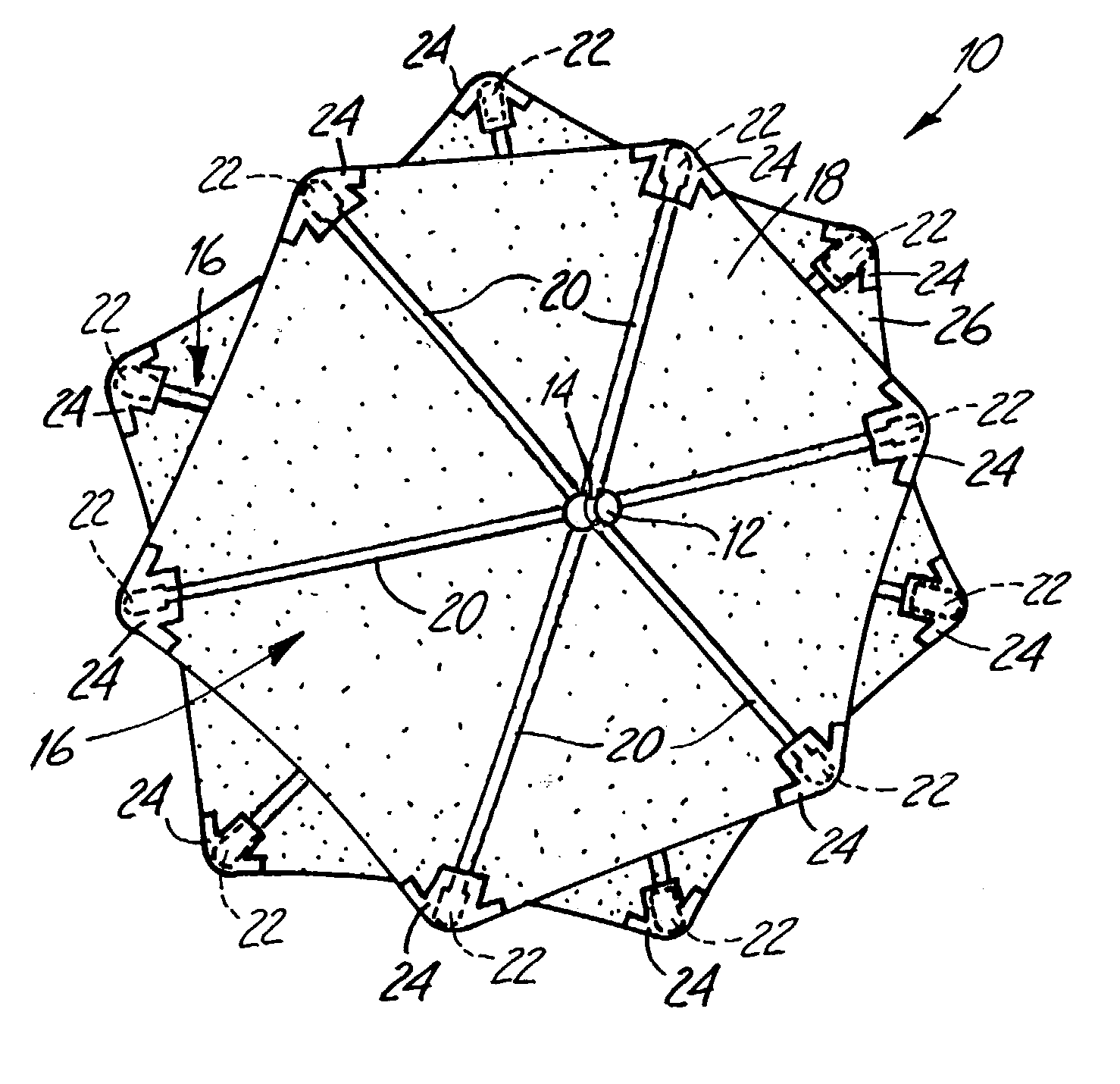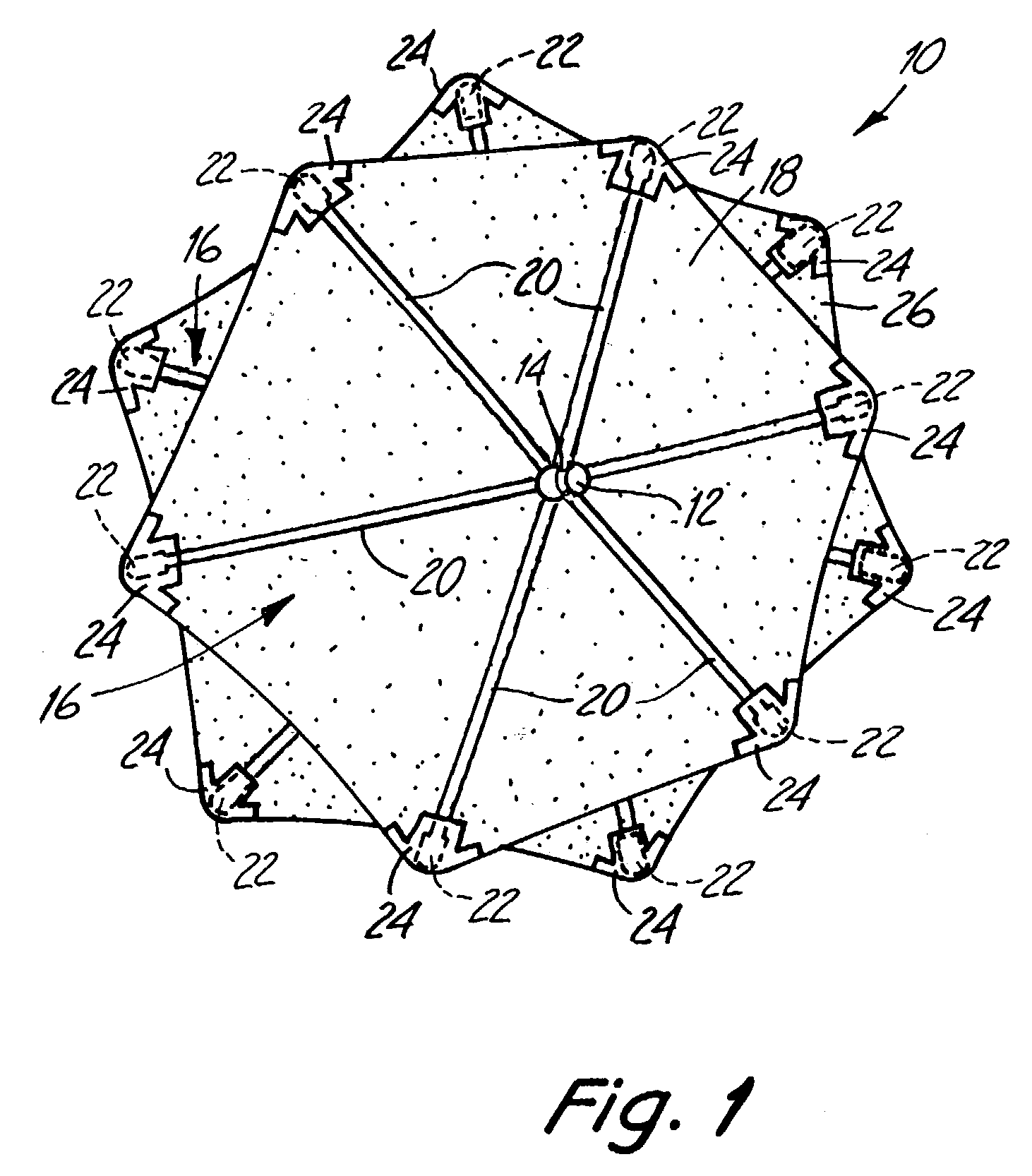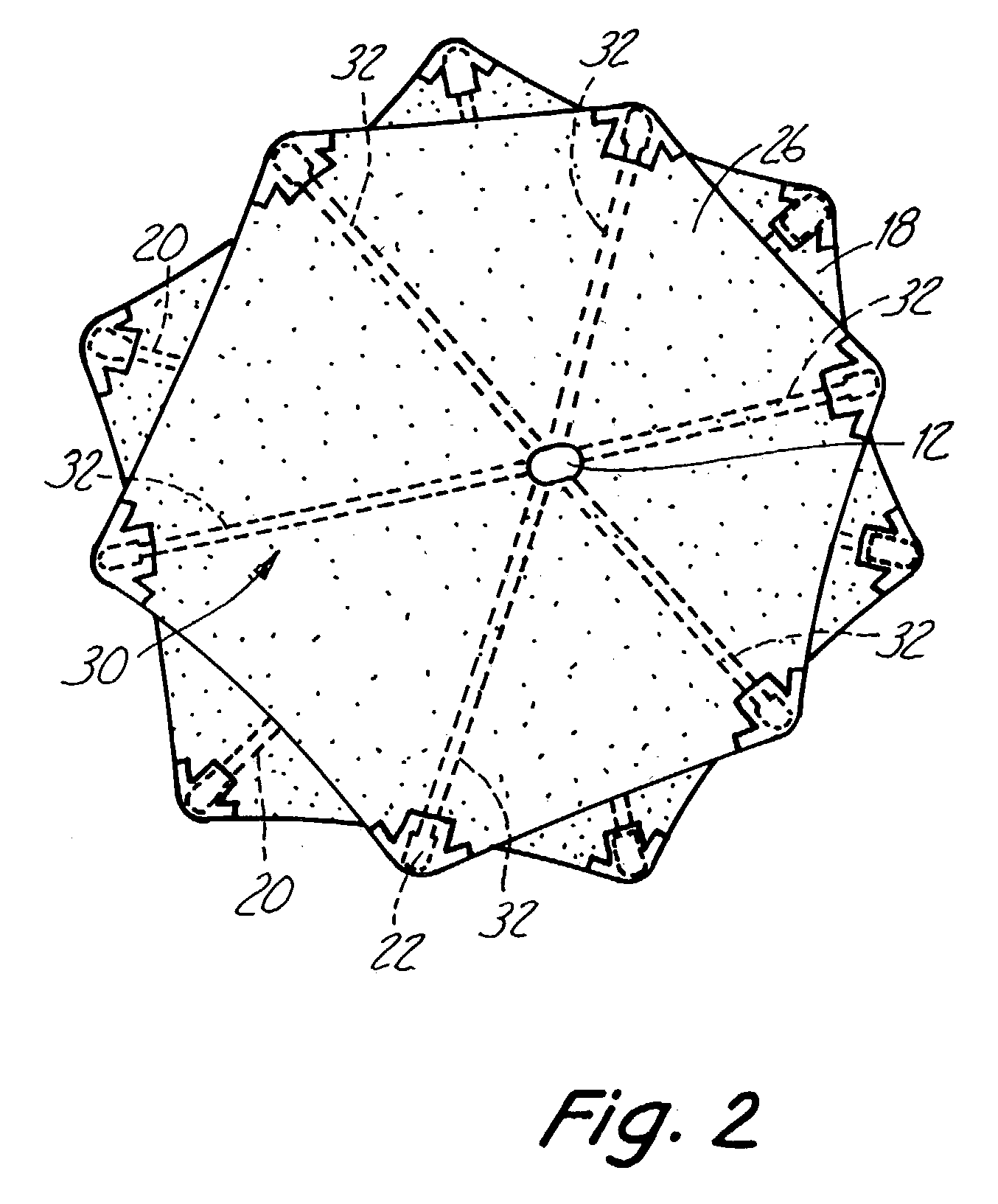Occlusion device having five or more arms
a septal defect and occlusion device technology, applied in the field of occlusion devices for septal defects having five or more arms, can solve the problems of difficult design of occlusion devices which adequately address all, high risk, painful and costly procedures, etc., to prevent any damage to surrounding tissue, improve the tension and “feel” of the device, and reduce the diameter of each arm.
- Summary
- Abstract
- Description
- Claims
- Application Information
AI Technical Summary
Benefits of technology
Problems solved by technology
Method used
Image
Examples
Embodiment Construction
[0018]FIG. 1 is a top perspective view of one embodiment of an occlusion device 10. The occlusion device 10 comprises a center section 12 having a groove 14, an upper wire fixation device 16, and an upper sail 18. The upper wire fixation device 16 comprises six wire arms 20 which terminate in atraumatic tips 22. The atraumatic tips 22 are covered by reinforcement patches 24. Also visible in FIG. 1 is a bottom sail 26 and wire arms 28, which likewise terminate in atraumatic tips 22 covered by patches 24.
[0019]FIG. 2 is a bottom perspective view of the occlusion device 10. Shown in FIG. 2 is the center post 12, bottom sail 26 and lower fixation device 30. The lower fixation device 30 likewise comprises six wire arms 32 which terminate in atraumatic tips 22 covered by reinforcement patches 24. Also shown in FIG. 2 is the upper sail 18, portions of the wire arms 20 and the atraumatic tips 22 covered by reinforcement patches 24.
[0020]Unlike the upper fixation device 16 which is located o...
PUM
 Login to View More
Login to View More Abstract
Description
Claims
Application Information
 Login to View More
Login to View More - R&D
- Intellectual Property
- Life Sciences
- Materials
- Tech Scout
- Unparalleled Data Quality
- Higher Quality Content
- 60% Fewer Hallucinations
Browse by: Latest US Patents, China's latest patents, Technical Efficacy Thesaurus, Application Domain, Technology Topic, Popular Technical Reports.
© 2025 PatSnap. All rights reserved.Legal|Privacy policy|Modern Slavery Act Transparency Statement|Sitemap|About US| Contact US: help@patsnap.com



